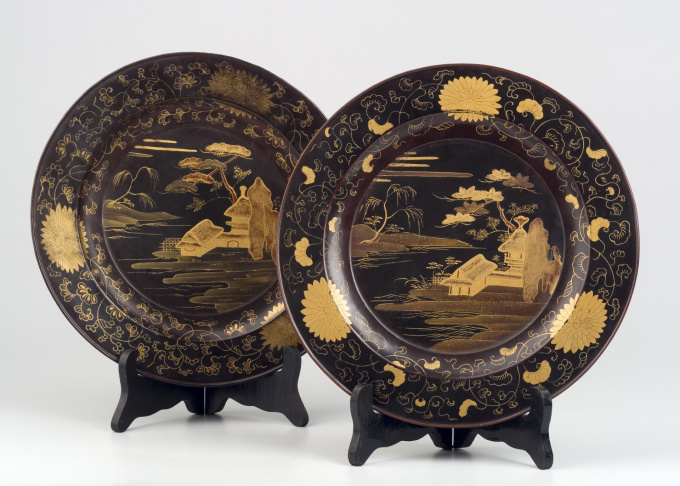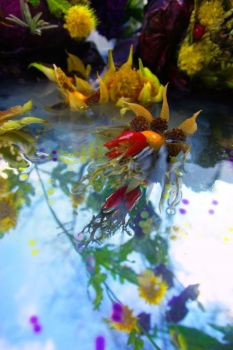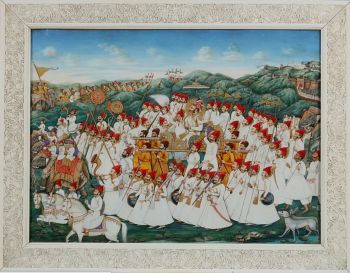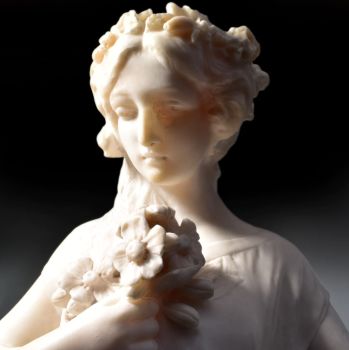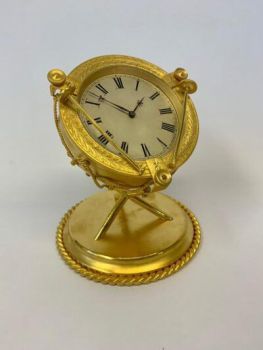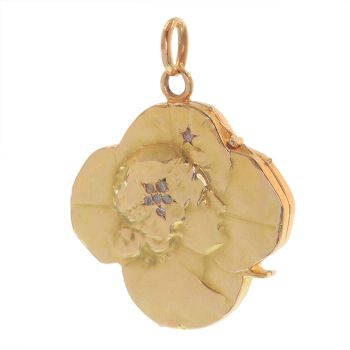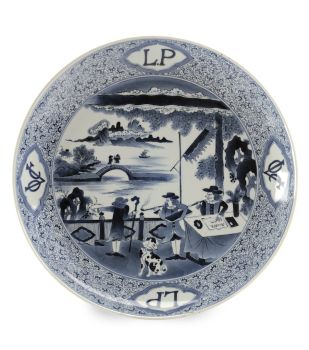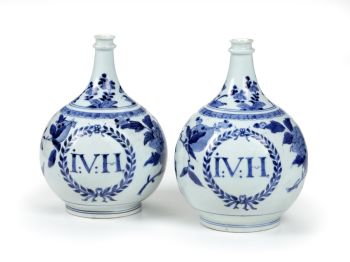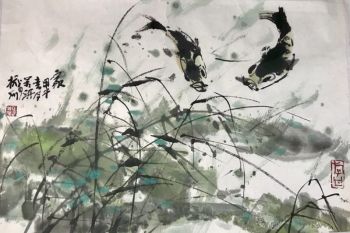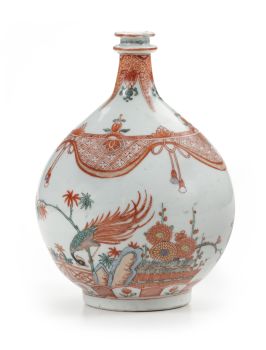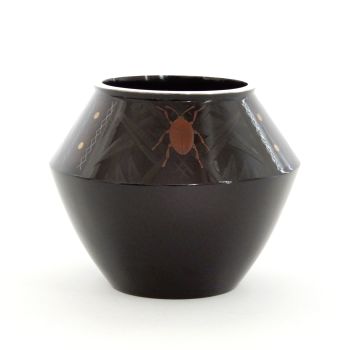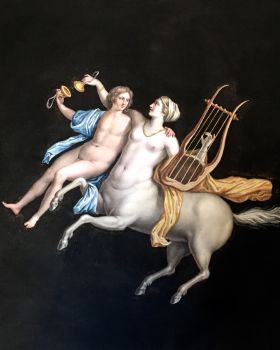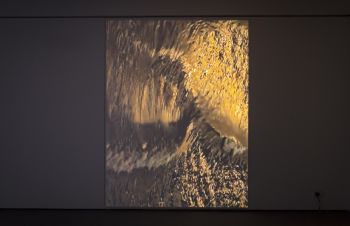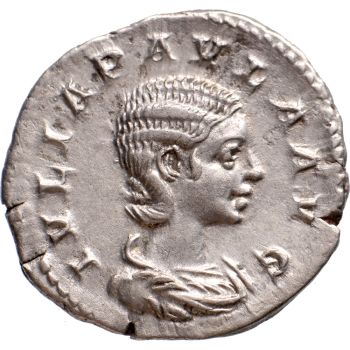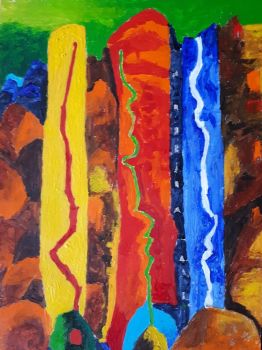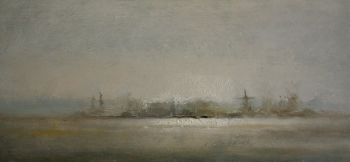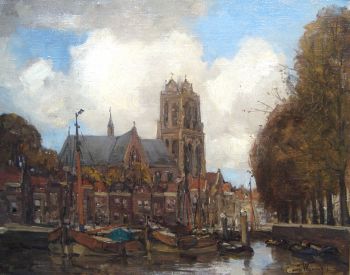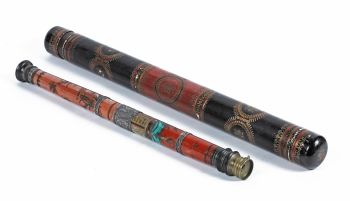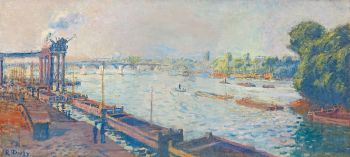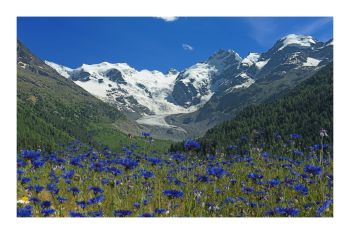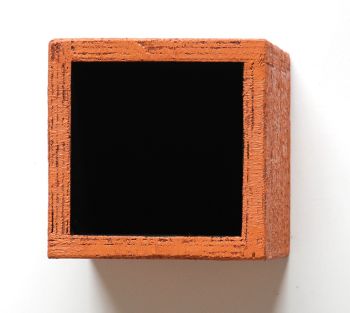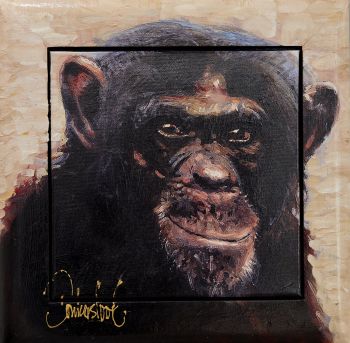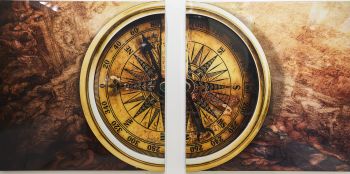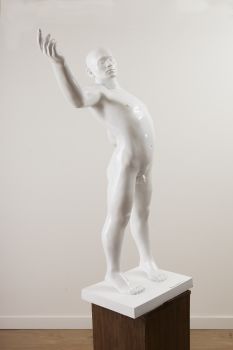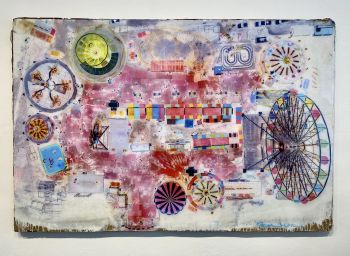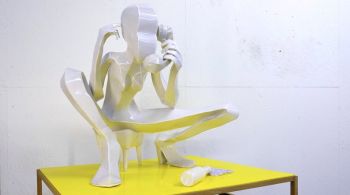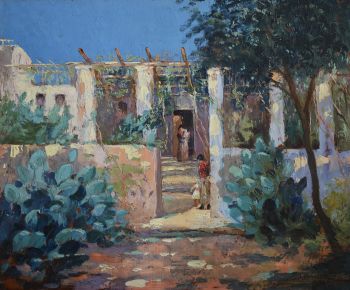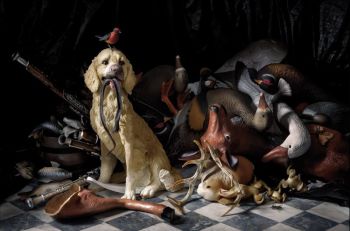Pair of Japanese Lacquered Plates 1700 - 1710
Unknown artist
WoodLacquer
ø 27 cm
Currently unavailable via Gallerease
- About the artworkThese plates probably were part of a laquer service of the kind that was made to order in the early 18th century for the European market.
The shape of the plate with the typical low wide rim with a slightly raise edge is derived from the model of a Dutch pewter diner plate.
The decoration of the center plane is slightly tactile (Maki-technique) en depicts an Oriental landscape with buildings and trees.
The decoration of the rim consists of ‘Karakusa-motives’ and stylized Chrysanthemums (Kiku-motive). The difference in the lacquer of the two plates is remarkable and suggests the work of different artists, both with their own interpretation of the motives.
After the large commissions for lacquer furniture by the Dutch in the 17th century the interest for these large objects faded, arguably due to the high cost. The interest for lacquer artifacts, however, continued but it shifted to objects like plates, bowls, mugs, teapots and coffeepots. Because of the ample demand for tableware from 1700 onwards, the artists turned to ‘serial production’ of these types of objects for foreign markets. Tableware was typically decorated with similar decorations. The decorations were akin to the “Pictorial style” of the late 17th century, though simpler and, until about 1785, always with Oriental motives.
This Japanese lacquer tableware competed in the highest segments of the European market with porcelain. The Oriental lacquer objects were seen as the more rare and desirable, thus enhancing the status of the owner.
The motives:
When the demand for lacquer tableware increased in the early 18th century the artists based their decorations mainly on designs found on Arita porcelain; Landscapes with houses and trees, flowery sprigs (Karakusa) and flowermotives like Chrysanthemum (Kiku).
The technique:
Sometimes copper was used as base for lacquer work, like in plaques, but wood was most commonly used to work with. For furniture Hinoki (Cypress) and sometimes Sugi (Cryptomeria Japonica) was the usual choice. Turned wooden objects like plates and bowls were commonly made of Kaeki (Zelkova serrate, a type of elm), because it can be made very thin and light. A Kaeki bowl before it is lacquered weighs no more than 8 grams. The objects are varnished with many coats of the concentrated resin of the varnish tree (Rhus verniciflua). After every coat of varnish the object is dried in a dust free room with a humidity of more than 80% and subsequently polished.
Relief is achieved by mixing lime into the first layers of varnish on those places that need to be raised. The color is provided by pigments. The technique were gold dust or foil is applied to the still wet lacquer is called Makie. The gold more or less sinks into the layer of lacquer and is polished once the object has dried. The work is finished with a transparent coat of varnish that again is polished to a shine. To emphasize the gold decorations, they were applied to hiramakie (bas relief) and even to takamakie (raised relief). For the Dutch export market the decorations were mainly applied to black backgrounds.
The “Pictorial style” in Japanese lacquer work is applied from roughly 1630 onwards. Starting from about 1650 the style develops; the double edged cartouches surrounding the depictions gradually disappear. Around 1680 the style has matured to the point, where the images appear unframed on the objects. Most of these objects are made in Makie technique with gold on black. - About the artist
It might happen that an artist or maker is unknown.
Some works are not to be determined by whom it is made or it is made by (a group of) craftsmen. Examples are statues from the Ancient Time, furniture, mirroirs, or signatures that are not clear or readible but as well some works are not signed at all.
As well you can find the following description:
•“Attributed to ….” In their opinion probably a work by the artist, at least in part
•“Studio of ….” or “Workshop of” In their opinion a work executed in the studio or workshop of the artist, possibly under his supervision
•“Circle of ….” In their opinion a work of the period of the artist showing his influence, closely associated with the artist but not necessarily his pupil
•“Style of ….” or “Follower of ….” In their opinion a work executed in the artist’s style but not necessarily by a pupil; may be contemporary or nearly contemporary
•“Manner of ….” In their opinion a work in the style of the artist but of a later date
•“After ….” In their opinion a copy (of any date) of a work of the artist
•“Signed…”, “Dated….” or “Inscribed” In their opinion the work has been signed/dated/inscribed by the artist. The addition of a question mark indicates an element of doubt
•"With signature ….”, “With date ….”, “With inscription….” or “Bears signature/date/inscription” in their opinion the signature/ date/ inscription has been added by someone other than the artist
Artwork details
Related artworks
Artista Desconhecido
IMPORTANTE E RARA GRANDE PINTURA DE 'ESTILO DE EMPRESA' ÍNDIO EM MARFIM QUE REPRESENTA UM DESFILE1850 - 1900
Preço em pedidoZebregs & Röell - Fine Art - Antiques
 Com curadoria de
Com curadoria deDanny Bree
Artista Desconhecido
Engels struttclock gesigneerd H.Rodrigues 42 Piccadilly 19th century
Preço em pedidoNico van den Assem restauratie
1 - 4 / 12- 1 - 4 / 6
Artista Desconhecido
Japanese art deco lacquervase with Scarab beetle motif1920 - 1950
Preço em pedidoDille Art
1 - 4 / 24Jean-François Rauzier
Istanbul Veduta - Limited edition of 8 2015 - 2024
Preço em pedidoVilla del Arte Galleries
1 - 4 / 24- 1 - 4 / 24

